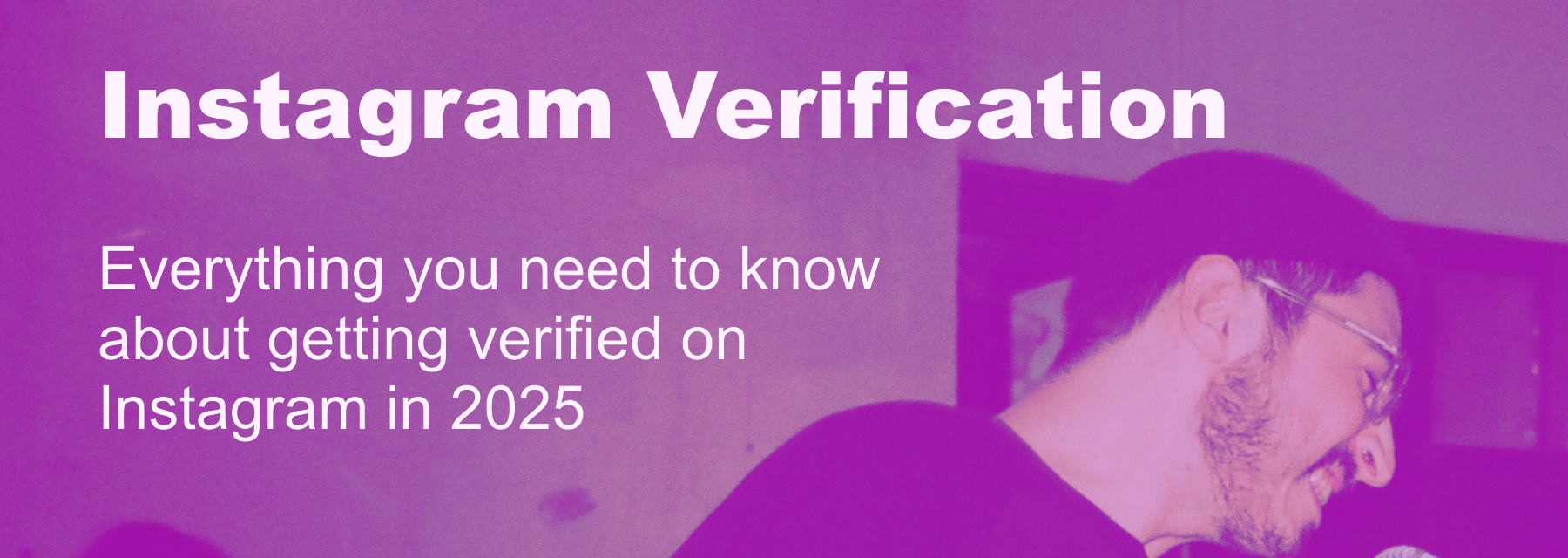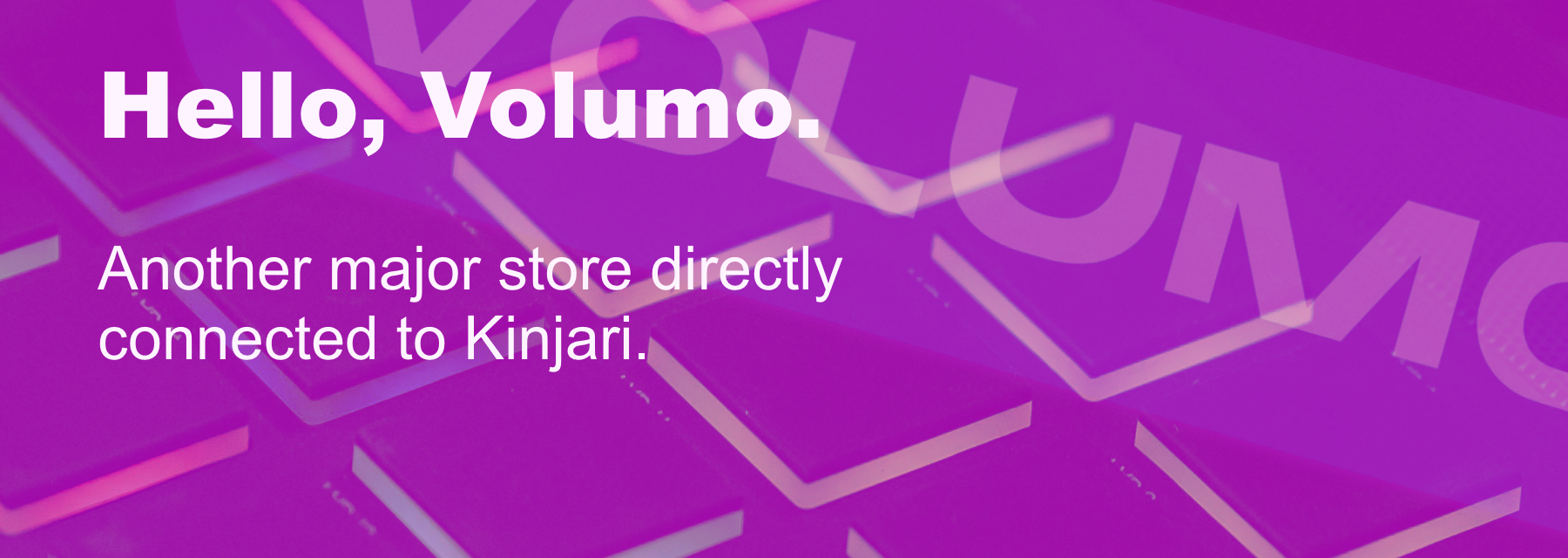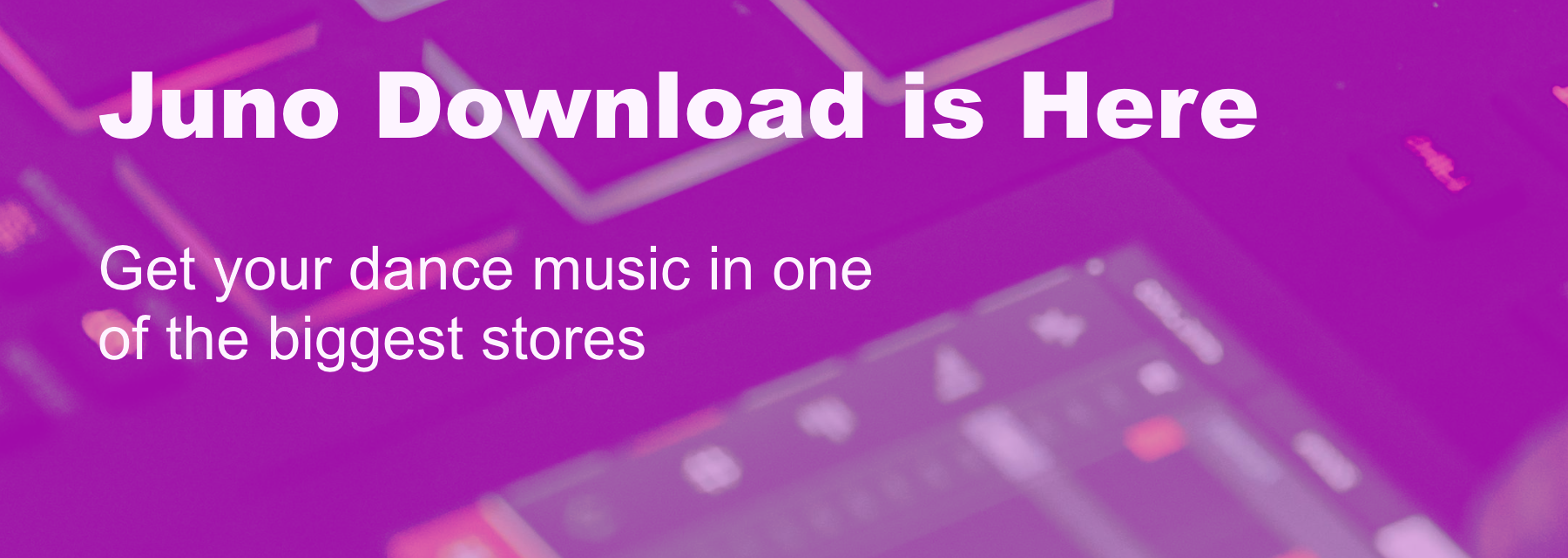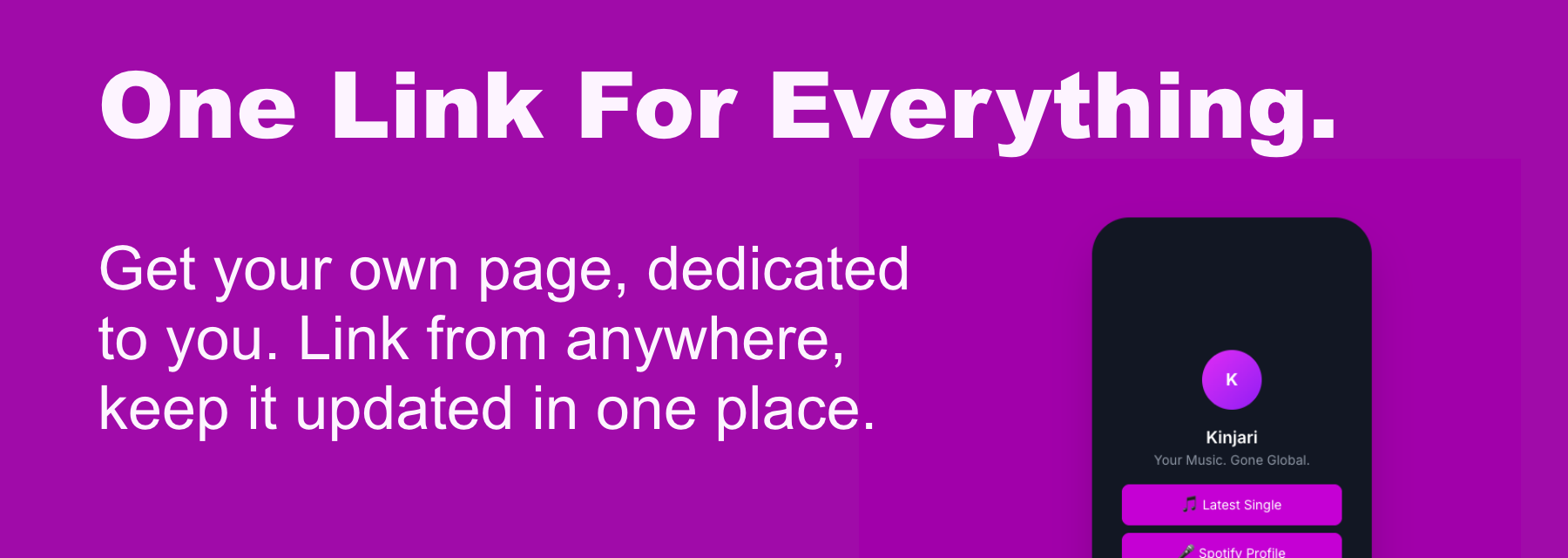If you've been scrolling through Spotify lately or chatting with other musicians, you've probably come across the term "EP" more times than you can count. But if you're still scratching your head wondering what on earth an EP actually is, don't worry. You're definitely not alone, and honestly, it's one of those music industry terms that gets thrown around so much that people sometimes forget to explain what it means.
I'm here to break it all down for you in plain English. As someone who works with independent artists every day at Kinjari, I've seen firsthand how EPs can absolutely transform a musician's career. And trust me, once you understand what they are and how powerful they can be, you'll wonder why you didn't start releasing them sooner.
What Does EP Actually Stand For?
Let's start with the basics. EP stands for "Extended Play". I know, not the most exciting name in the world, but it tells you exactly what you need to know. An EP is essentially a musical release that sits right in the middle ground between a single and a full album.
Think of it like this: if a single is a quick snack and an album is a full three-course meal, then an EP is like a really satisfying starter that leaves you wanting more. It typically contains 4 to 6 tracks and runs for about 15 to 30 minutes. Some platforms, like iTunes and Spotify, will actually classify anything under 30 minutes as an EP regardless of how many tracks it has.
But here's where it gets a bit fuzzy (and honestly, this is part of what makes the music industry both frustrating and fascinating). There isn't a universal law that dictates exactly what counts as an EP. Some artists push the boundaries with 7-track EPs that clock in at 25 minutes, whilst others might release a 3-track EP that still gets the label because of its artistic intent.
A Quick Trip Through EP History
The story of the EP goes way back to the 1950s, which might surprise you. Back then, music came on vinyl records, and the size of the record literally determined how much music you could fit on it. RCA Victor introduced the first EPs in 1952 as a more economical alternative to full-length albums. They were pressed on 7-inch vinyl records that played at 45 RPM, and they could hold about 7.5 minutes of music per side.
The whole idea was brilliant, really. Record labels could offer more than a single without the massive production costs of a full album. It was perfect for smaller, independent labels who couldn't afford to produce expensive LPs. Plus, fans got more bang for their buck compared to buying just a single.
The EP format really took off during the punk rock movement of the late 1970s. Bands like The Clash and The Sex Pistols used EPs to get their music out quickly and cheaply, which perfectly matched punk's DIY ethos. It was all about immediacy and rawness, something that EPs captured perfectly.
What Makes an EP Different from Singles and Albums?
Right, so now you know what an EP is, but how does it actually differ from other release formats? Let me break this down for you:
Singles typically have 1-3 songs and run for less than 10 minutes. They're designed to highlight one main track, often with a couple of remixes or B-sides thrown in.
EPs contain 4-6 songs and last 15-30 minutes. They give you enough space to showcase your range without overwhelming listeners.
Albums (or LPs) have 7 or more tracks and typically run over 30 minutes. They're meant to be comprehensive artistic statements that take listeners on a proper journey.
But here's the thing that really matters in 2025: it's not just about the numbers. The real difference lies in purpose and strategy. EPs are often used for experimentation, building momentum between albums, or introducing new sounds without the pressure of creating a full album.
Why EPs Are Absolutely Perfect for Today's Music Scene
Let's talk about why EPs have become such a big deal, especially for independent artists like the ones we work with at Kinjari. The modern music landscape is completely different from what it was even five years ago, and EPs fit perfectly into how people consume music today.
Shorter Attention Spans Are Real
I hate to be the bearer of bad news, but research shows that the average human attention span has dropped to about 8 seconds. That might sound depressing, but it's actually created a massive opportunity for smart artists. People want music they can digest quickly, and EPs deliver exactly that.
Think about it. When you discover a new artist on Spotify, are you more likely to dive straight into their 12-track album, or would you rather start with a 5-track EP that gives you a taste of their sound? I know what I'd choose, and streaming data backs this up. EPs are perfect for the "music grazing" behaviour that's become so common.
The Streaming Game Has Changed Everything
Streaming platforms absolutely love frequent releases. The more often you drop new music, the better your chances of staying visible in playlists and algorithms. EPs let you release music regularly without the exhausting process of creating full albums every few months.
At Kinjari, we've seen artists have incredible success with what we call the "EP strategy". Instead of disappearing for two years to work on an album, they drop an EP every few months. This keeps their name in front of fans and gives playlist curators fresh content to work with.
Cost and Time Efficiency
Let's be brutally honest here: recording a full album is expensive and time-consuming. Most independent artists simply don't have the budget to spend months in the studio creating 12 perfect tracks. EPs let you focus your energy and money on creating 4-6 really strong songs instead.
This doesn't mean cutting corners on quality. Actually, it's the opposite. With fewer tracks to worry about, you can spend more time perfecting each one. Every song on your EP needs to count, which often leads to tighter, more focused music.
Perfect for Experimentation
One of the best things about EPs is that they give you room to experiment without massive risk. Want to try a different genre? Collaborate with someone new? Test out a different sound? An EP is the perfect testing ground.
If your experimental EP doesn't land quite right, you haven't wasted months of work on a full album. But if it connects with people, you've discovered a new direction for your music. Some of the most successful artists use EPs specifically for this kind of creative exploration.
The Strategic Power of EPs in 2025
Here's where things get really interesting. In 2025, EPs aren't just a format choice. They're a strategic tool that smart artists use to build their careers. Let me share some of the strategies we've seen work brilliantly for Kinjari artists.
Building Anticipation for Full Albums
Many artists use EPs as teasers for upcoming albums. You can release an EP that showcases your new sound, gets people excited, and builds anticipation for the full project. Think of it as a movie trailer, but for music.
This strategy works particularly well because it gives you two separate opportunities to capture attention and generate buzz. First with the EP, then again with the album.
Maintaining Momentum Between Major Releases
The traditional album cycle of releasing an album every two or three years just doesn't work anymore. Fans want more frequent content, and the streaming economy rewards consistent releases. EPs bridge the gap perfectly.
You can keep your fanbase engaged and attract new listeners without the pressure of constantly creating full albums. It's a sustainable way to maintain momentum in your career.
Platform-Specific Releases
Here's something really clever that forward-thinking artists are doing: creating EPs specifically for different platforms and audiences. You might release one EP that's perfect for TikTok virality, another that showcases your skills for Spotify playlists, and another that demonstrates your live performance abilities.
Different platforms have different audiences and different ways of consuming music. EPs give you the flexibility to tailor your releases for maximum impact on each platform.
The Current EP Landscape: What's Working in 2025
The music industry changes fast, and what worked for EPs five years ago might not work today. Based on what we're seeing at Kinjari and across the industry, here are the trends that are shaping EP releases in 2025.
Quality Over Quantity Has Never Been More Important
With thousands of tracks being uploaded to streaming platforms every day 24, standing out requires exceptional quality. EPs actually work in your favour here because you can focus all your resources on making fewer tracks absolutely brilliant.
Playlist curators and streaming algorithms are getting smarter at identifying quality music. A well-crafted 5-track EP will always outperform a rushed 10-track album.
Cross-Platform Strategy Is Essential
Successful EP releases in 2025 involve much more than just uploading to Spotify and hoping for the best. Artists are creating comprehensive strategies that span multiple platforms.
This might mean releasing teaser clips on TikTok before the EP drops, creating exclusive content for Instagram, and using the EP tracks for different types of social media content. It's about creating a whole ecosystem around your release.
Visual Components Are Crucial
EPs aren't just audio anymore. Successful releases often include visual elements: music videos, lyric videos, behind-the-scenes content, or even full visual albums. These visual components help your EP stand out and give fans more ways to engage with your music.
Famous EPs That Prove the Format's Power
Let me share some examples that'll show you just how powerful EPs can be, and you can see how they're career-defining moments that prove EPs can be just as impactful as full albums.
Alice in Chains' "Jar of Flies" (1994) was the first EP in music history to debut at No. 1 on the Billboard 200 chart. It sold over 141,000 copies in its first week and eventually went quadruple platinum. Not bad for an EP that was recorded in just one week!
Billie Eilish's "Don't Smile at Me" (2017) launched her career. This debut EP showcased her unique sound and helped her build a massive following before her first album. It proved that EPs could be launching pads for major careers.
More recently, we've seen incredible EP releases from artists like FKA Twigs, Bon Iver, and Janelle Monáe. These aren't just stopgap releases. Oh no, they're artistic statements in their own right.
What's particularly interesting about 2024's best EPs is how diverse they've become. From electronic experiments to indie rock showcases to genre-blending adventures, EPs are giving artists unprecedented creative freedom.
How Kinjari Makes EP Distribution Simple and Effective
Now, here's where I get to talk about why we built Kinjari the way we did. Having worked with thousands of independent artists, we know that distribution should be the easy part of your music career. You should spend your time creating amazing EPs, not wrestling with complicated upload processes or worrying about whether your music will actually reach streaming platforms.
Unlimited Releases for One Low Price
At Kinjari, you pay just $3 per month and can release as many EPs as you want. No per-release fees, no setup costs, no nasty surprises. This pricing structure is perfect for EP-focused artists who want to release frequently without breaking the bank.
Compare that to other distributors who charge per release or demand annual fees upfront. If you're releasing an EP every few months (which we'd recommend), those costs add up quickly. Our model aligns with your success because the more you release, the better value you get.
Global Reach from Day One
When you release an EP through Kinjari, it goes live on all major streaming platforms and digital stores worldwide. We're talking Spotify, Apple Music, Amazon Music, YouTube Music, TikTok, Beatport, and dozens of others. Your EP will be available wherever your listeners are, globally, within 2-3 weeks of submission.
This global reach is crucial for EPs because they're often designed to test new markets or reach different audiences. You shouldn't have to guess where your music might find an audience, It should be everywhere from the start.
Keep 90% of Your Royalties
Here's the bit that really matters: you keep 90% of your streaming royalties. After our monthly fee, we take just 10% of what your music earns. This means the more successful your EPs become, the more you earn.
Many distributors advertise "keep 100% of royalties" but then charge much higher upfront fees, or secretly deduct royalties behind the scenes by paying a lower stream rate. When you do the maths, you often end up better off with our model, especially if your music starts generating decent streaming numbers.
Professional Support When You Need It
Releasing music can be stressful, especially when you're trying to time an EP release perfectly. That's why we provide genuine human support with a 24-hour response time. No chatbots, no automated responses. Just real people who understand the music industry and want to help you succeed.
We also handle all the technical requirements that streaming platforms demand. Proper metadata, correct file formats, appropriate cover art. The whole lot. We make sure everything meets professional standards before it goes live.
YouTube Content ID Protection Included
Here's something that sets us apart: every eligible Kinjari release includes YouTube Content ID protection at no extra cost. This means if someone uses your EP tracks in their YouTube videos, you automatically earn revenue from those uses. As long as it meets YouTube's standards, its all taken care of for you.
This is particularly valuable for EPs because they're often used in vlogs, covers, and other user-generated content. Instead of missing out on that revenue, you'll earn money every time your music appears on YouTube, anywhere in the world.
Technical Requirements for Your EP Release
Let's get practical for a moment. If you're planning to release an EP through Kinjari (or anywhere else, but we hope you choose us!), here are the technical requirements you need to know:
Track Count and Length
For your release to be classified as an EP, you'll want 4-6 tracks with a total runtime under 30 minutes. If you go over 30 minutes, most platforms will automatically classify it as an album. If you specifically want it labelled as an EP, include "– EP" in your release title.
Audio Quality
Your tracks need to be high-quality WAV files, typically 16-bit/44.1kHz or higher. Please don't upload MP3s! Streaming platforms need the highest quality source files to create their own formats later on, so you really need to give them the best source possible.
Metadata
This is crucial and often overlooked. You need proper titles, artist names, songwriter credits, and genre classifications. Incorrect metadata can delay your release or cause it to appear incorrectly on streaming platforms.
Cover Art
Your EP cover art needs to be at least 3000x3000 and in RGB. It should accurately represent your EP and follow each platform's content guidelines. If you're unsure, check out our style guide!
Timing Your EP Release for Maximum Impact
One of the most important aspects of releasing an EP is timing. Get this right, and you'll maximise your chances of playlist placement, media coverage, and fan engagement. Get it wrong, and your EP might get lost in the noise.
Plan Ahead
At Kinjari, we recommend submitting your EP at least three weeks before your intended release date. This gives us time to review everything, ensures all platforms are ready, and allows you to pitch to playlist curators in advance.
Last-minute submissions are release killers. If we spot any issues with your files or metadata, we need time to get corrections from you without delaying your release.
Choose Strategic Release Dates
Avoid releasing during major industry events or when huge artists are dropping albums. Friday releases work well because that's when most platforms update their new releases.
Consider your audience too. If your EP targets a specific demographic, think about when they're most likely to discover new music.
Build Pre-Release Excitement
Start promoting your EP at least 2-4 weeks before release. Use social media, email lists, and any press contacts you have. The goal is to create anticipation so people are ready to listen as soon as it goes live.
The Future of EPs: What's Coming Next
Looking ahead, EPs are positioned to become even more important in the music industry. Several trends are converging to make the format more valuable than ever:
AI and Personalisation
Streaming platforms are getting better at personalised recommendations. EPs work perfectly with this trend because they're focused and easy for algorithms to categorise and recommend.
Virtual and Augmented Reality
As VR concerts and AR experiences become more common, EPs provide the perfect soundtrack length for these new formats. A 20-minute EP is ideal for an immersive virtual experience.
Cross-Platform Integration
The lines between different platforms are blurring. EPs that work across TikTok, Instagram, Spotify, and gaming platforms simultaneously will have massive advantages.
Your EP Strategy: Making It Work for You
So, how do you actually use EPs strategically in your music career? Here's a practical framework that we've seen work for Kinjari artists:
Start With Your Goals
Are you trying to build a fanbase? Test new sounds? Bridge the gap between albums? Your goals should determine your EP strategy. Different objectives require different approaches to track selection, promotion, and timing.
Think in Series
Consider releasing multiple connected EPs rather than one standalone release. This could be thematic (like seasons or emotions) or musical (exploring different genres). Series create anticipation and give fans something to collect.
Cross-Promote Strategically
Use each EP release to promote your previous work and hint at what's coming next. Create a ecosystem where each release supports the others.
Engage Your Community
EPs are perfect for direct fan engagement. Ask your audience what they want to hear, involve them in the creative process, and make them feel part of your journey.
Why Kinjari Is Your Best Choice for EP Distribution
I've talked a lot about EPs and the industry, but let me be clear about why Kinjari is specifically brilliant for EP releases:
We Understand Independent Artists
We built Kinjari specifically for independent musicians who want to release frequently and build sustainable careers. Our entire platform is designed around the realities of modern independent music making.
Transparent, Fair Pricing
At $3 per month, you know exactly what you're paying. No hidden fees, no surprise charges, no complex commission structures. This predictability is crucial when you're planning multiple EP releases.
Global Distribution That Actually Works
We are able to distribute your music effortlessly to over 100 platforms and stores worldwide. Your EPs don't just get uploaded and thrown in to the world randomly, they get properly delivered with correct metadata and professional presentation to ensure you get the best chance of success.
Real Support from Real People
When you have questions or problems, you talk to actual humans who understand the music industry. We're not a faceless corporation. Instead, we're a team of music lovers who want to see you succeed.
Built for the Future
We're constantly adding new features and partnerships. YouTube Content ID protection, professional biolinks, and advanced analytics are all included in your monthly fee.
Ready to Release Your First EP?
If you've made it this far, you're clearly serious about understanding EPs and using them strategically in your music career. That's brilliant, because EPs represent one of the best opportunities for independent artists in 2025.
The format gives you creative freedom, strategic flexibility, and cost efficiency that albums simply can't match. In an industry where attention spans are shrinking and competition is fierce, EPs let you deliver focused, impactful music that cuts through the noise.
At Kinjari, we've seen firsthand how the right EP strategy can transform an artist's career. From bedroom producers getting their first playlist placements to established artists exploring new sounds, EPs are powerful tools for anyone who understands how to use them.
The music industry might seem complicated and overwhelming sometimes, but your path forward doesn't have to be. Start with a strong EP, distribute it professionally through Kinjari, and build from there. Focus on creating music that matters to you, and let us handle getting it to the world.
Your audience is out there waiting to discover your sound. An EP might just be the perfect way to introduce them to what you're all about. The question isn't whether you should release an EP. It's when you're going to start.






